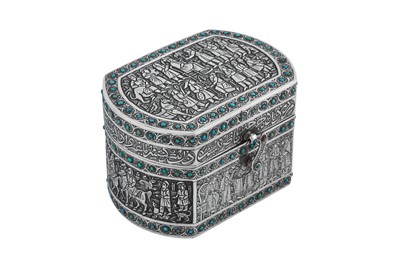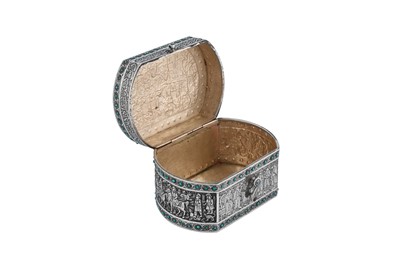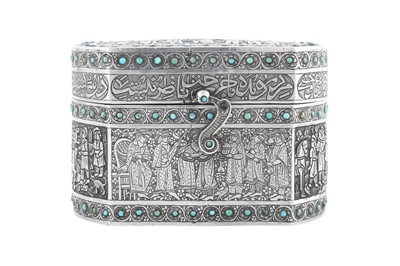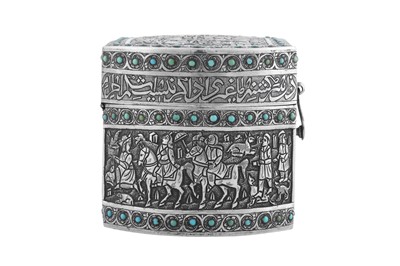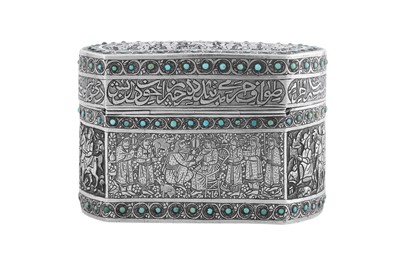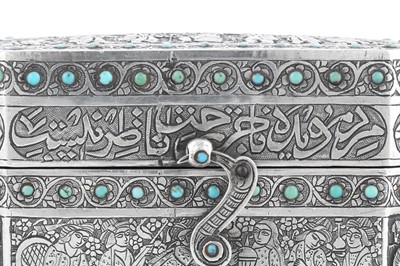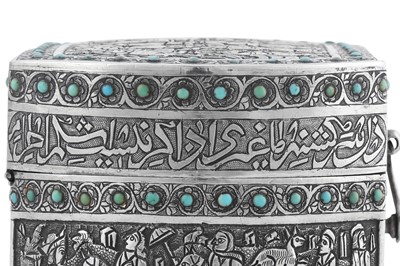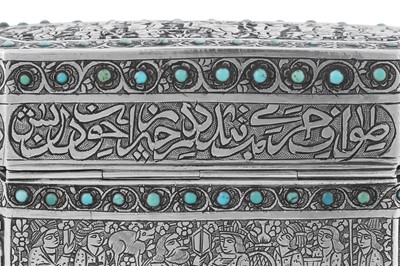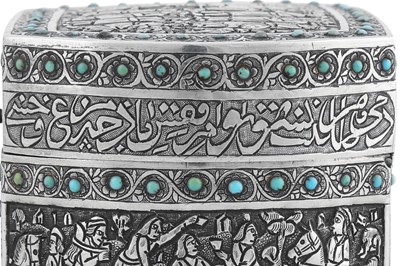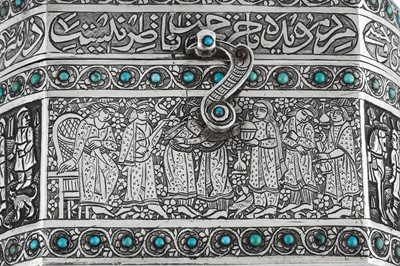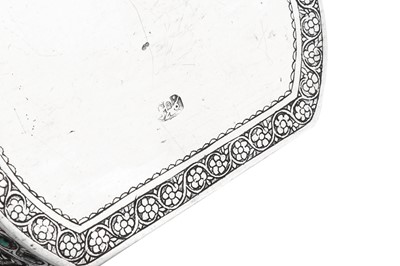22nd Jun, 2022 11:00
Silver & Objects of Vertu
An early 20th century Persian (Iranian) turquoise set silver box, Isfahan circa 1910 mark of Ja'far
An early 20th century Persian (Iranian) turquoise set silver box, Isfahan circa 1910 mark of Ja'far
Qajar dynasty. Of oblong form, the hinged lid with a swing catch. The lid with a chased monabbat-kari decoration in the Shiraz manner of a seated King Darius before emissaries, including a horse, a rabbit as well as King Darius in combat with Ahriman to the upper left. The sides with further chased scenes, one of Shirin bathing, her attendant holding a towel, being approached by Khosrow on horseback, the opposing side with Khosrow on horseback in procession. The front and back with engraved ghalam zani decoration of Safavid style courtly scenes, with musicians, libation bearers with long necked bottles and a seated prince. The side of lid with chased calligraphic panels in Naskh script, relating to wordplays of relating aspects of love to the pilgrimage of Mecca. The opposable catch formed as cranes head set with a red paste and a turquoise. The lid and sides with borders of trailing rosettes centred with turquoise. Marked underneath with workshop mark Amal-e Ja'far عمل جعفر (the work of Ja’far) and with marked with French swan guarantee mark twice (swan used 1893-1970).
Length – 10.6 cm / 4.2 inches
Height – 6.8 cm / 2.8 inches
Weight – 253 grams / 8.13 inches
There is a significant corpus of silverware marked for Ja’far, the range of wares covering tea sets and trays, cigarette boxes, beakers, chargers, condiments, card cases and cocktail shakers. Dated examples are known from at least the 1920’s yet the style of the decoration can be associated with the very end of the 19th century until the 1930’s. There are two main groups of decoration for wares marked Ja’far; those with figures, drawn upon Safavid paintings either shown in courtly group scenes with musicians or as individuals, then there are those with dense foliage populated with nightingales gol-o bolbol. It is probable that Ja’far was both a manufacturing workshop and a retailer, silver bearing this mark is seen in both Isfahan style engraving and the chased figural work of Shiraz. Some of the finest wares combine both these styles on the same piece suggesting that Shirazi craftsmen may have been employed in Isfahan. There is only one version of the Amal-e Ja’far mark, evidently the first encameo cut steel punch used in Persian silverware, this is an uncommon occurrence in proficient silver producers as punches do soften and even break over time.
Sold for £1,750
Includes Buyer's Premium
Do you have an item similar to the item above? If so please click the link below to submit a free online valuation request through our website.

